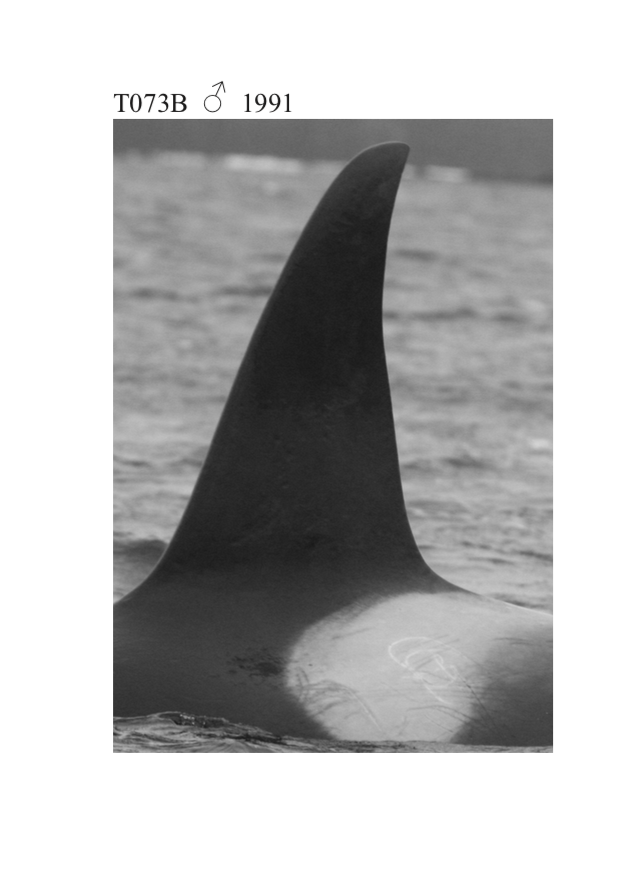COMOX, B.C. – The visiting orca in Comox Harbour has a name.
It has been identified as T073B, or a transient killer whale.
Jackie Hildering with the Marine Education and Research Society told MyComoxValleyNow.com said that through DFO research, “it is known that the whale is T073B and a member of the population of mammal-hunting orca known as a Bigg’s’ or ‘Transient’ Killer Whales.”
Hildering said that through DFO’s long-term ID work, it is known that the orca was born in 1991.
“It is not unusual for this kind of orca to be on their own,” said Hildering, the society’s education director and humpback researcher.
“For this population, some organize themselves in matrilines and some do not.”
DFO whale researcher Jared Towers reported on Friday afternoon that the whale is still in the harbour, adding that it is very atypical for an orca to be consistently in one location.
“For a killer whale it is unusual (to stay in one place for a long period time),” Towers said. “Killer whales are typically on the move and this whale has been there since Monday afternoon. If he was in the area for just a few hours that would be something we wouldn’t worry too much about. We’ve given him a few days to leave the area and he still hasn’t so it has become more and more unusual all the time that he’s still there.”
However, there’s no evidence that the whale is in distress or needs any help.
“He looks healthy,” Towers said. “Aside from not moving around too much, his behaviour is pretty normal, so at this point we’re going to be keeping a close eye and ear on the situation. Killer whales are vocal so we’ll be listening in the area, and if he needs help we’ll figure something out.”
Updated regulations
The society urges boaters that if they see a blow, to go slow.
Canada’s Marine Mammal Regulations were updated in July 2018.
No person shall approach a marine mammal to, or to attempt to,
– feed it;
– swim with it or interact with it;
– move it or entice or cause it to move from the immediate vicinity in which it is found;
– separate it from members of its group or go between it and a calf;
– trap it or its group between a vessel and the shore or between a vessel and one or more other vessels; or
– tag or mark it.
Minimum approach distances for vessels:
– 200 metres for all Killer Whales (in Pacific waters);
– 200 metres for whale, dolphin and porpoise species with calves or in resting position; and
– 100 metres for all other whales, dolphins and porpoises.
Towers said in a place with heavy boat traffic such as Comox Harbour, people need to be aware that there’s a killer whale in the area.
“They need to be at least 200 metres away from it, to give it space so it can find its way out of there,” he said.
On the The Transient Killer Whale Research Project’s Facebook page, MLS researcher Nick Templeman noted on Monday that the “T073B has been in Comox Harbour for over 24 hours now. Whale watch vessels on scene recorded 16 plus minute dives. We were able to witness one at least that long as he moved from the Comox marina Breakwater out to the Royston Wrecks area. At one point of the encounter he became entangled in a crab trap and marker float.”






